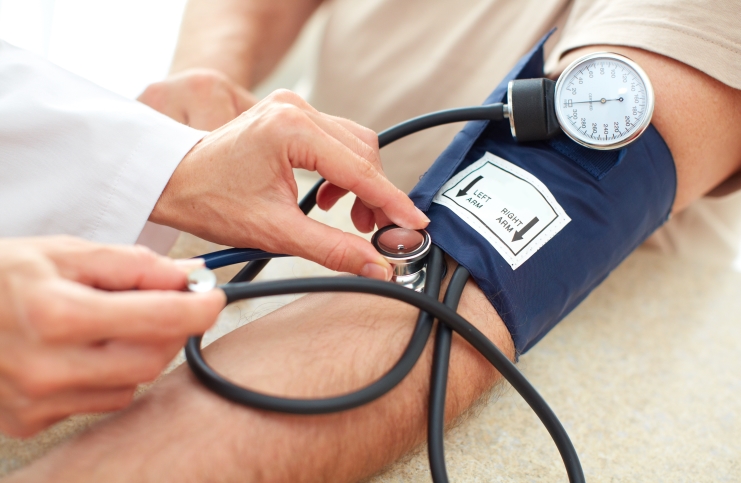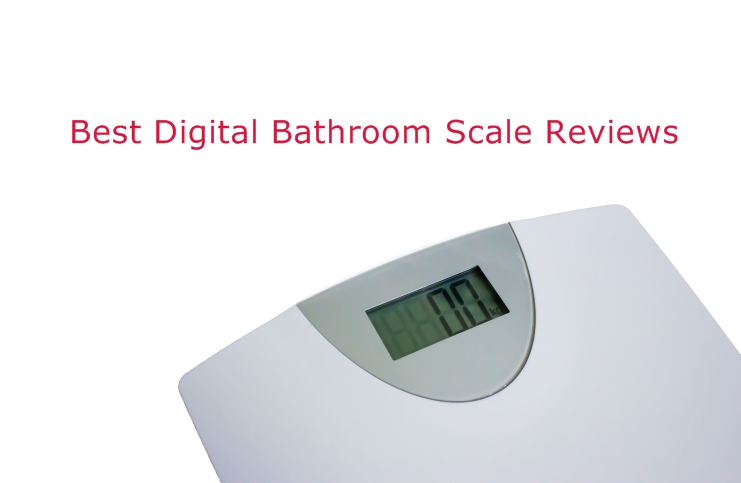Blood pressure is one of, if not the most important health related variable that needs to be checked on a regular basis. Without regular checks, heart disease and heart failure slowly sneak up on us.
Healthy blood pressure is considered 120/80 or less. Regular resting numbers higher than that indicate pre-hypertension. Hypertension is when resting blood pressure is consistently 140/90 or higher.
Once hypertension sets in, it starts to damage the walls of our arteries and heart, leading to irreparable damage. This is why regular checks are so important.
Of course, most drug stores have a blood pressure station where you can check for free, but these devices can give unreliable results, since it’s hard to actually sit down and relax when you’re on display in the middle of a busy store. Not to mention the added stress if there’s a lineup of people waiting to check their own blood pressure.
The easiest and best way to get the most reliable results is to check your blood pressure at home, using an automatic blood pressure monitor – preferably something with a built-in memory so you can track your results over time and have them ready for your doctor if you have any risk factors and/or have been diagnosed with hypertension or pre-hypertension already.
Keep reading to learn more about blood pressure monitors and to get advice about choosing a device that fits your needs and budget.
Advantages of Owning Your Own Blood Pressure Monitor
More Accurate Results
White Coat Hypertension is a condition that affects many people. The stress of visiting the doctor or another healthcare professional can make it appear like you have hypertensive resting blood pressure, when in fact your blood pressure is fine when you’re at home, work, etc.
In the past, this problem was relatively unknown to medical professionals, leading to misdiagnosis of heart and circulatory problems and unnecessary prescribing of side effect inducing blood pressure medications.
Monitoring your own resting blood pressure regularly in the comfort of your own home can help combat misdiagnosis, because you know what your actual resting blood pressure is and can tell your doctor, thus alleviating any concerns.
Catch Problems Early on
Aside from the fact that your doctor may just neglect to check your blood pressure if he/she feels you’re not currently in any of the risk groups for hypertension, there’s another problem that can impede proper diagnosis of heart issues.
Masked Hypertension is a fairly common condition where your BP appears normal when checked by a healthcare professional, even though your average BP is much higher, in the danger zone. Just as with White Coat Hypertension, Masked Hypertension is easiest identified when you yourself do regular testing and know what’s normal and what’s not.
Track Treatment Goals
Whether your goal is to change your diet and/or alter lifestyle habits to bring your BP down, or you and your doctor have decided medication is necessary; testing at home will help you get further ahead than simply going to the doctor on a bi-monthly schedule.
When it comes to finding the right dose of blood pressure medication, doctors are quite simply in the dark. They have to start you at a low dose, then carefully monitor as the dose increases to find the sweet spot where your BP is just right, without taking it too low.
When you’re testing regularly at home, you can offer invaluable feedback as to how effectively your current dose is regulating your blood pressure.
Fewer Hospital Visits
Pounding and/or a racing heart beat, called heart palpitations is among a long list of common reasons why people find themselves in an emergency room, only to get a battery of tests completed and be told everything’s fine.
The ability to test your blood pressure and pulse when you start to feel something isn’t right can help alleviate the symptoms of palpitations and other worrisome, yet non-threatening conditions when they arise.
Reduced Health Anxiety
Many people suffer from chronic worry about their health and other issues in their life. Some people do have reason for concern, especially if they have a long history of health problems. However, being a hypochondriac can also lead to unnecessary, often embarrassing trips to the ER.
Having a blood pressure monitor is a great way to ease the stress of chronic worries about your blood pressure and pulse rate.
More Motivation to Stick to Health Plan
“What you don’t know can’t kill you.” How many times have we heard this throughout life, or jokingly said it believing it to be true? In fact, not keeping on top of your blood pressure-lowering plan can and will kill you sooner or later.
Much like a diabetic who suddenly decides to start testing their blood sugar and realizing just how various lifestyle factors are affecting their health, someone with heart problems will find it hard to ignore their problem when the numbers are right there in front of them.
A blood pressure monitor will keep you firmly seated in reality, while (hopefully) encouraging you to improve the various factors in your life that are contributing to your current heart problems.
Types of Blood Pressure Monitors
There are a few different monitors available for home users. However, there’s really only one type that your doctor and your country’s respective medical authority would recommend.
Here are the different types of monitors you can expect to find in your search:
Cuff Style
*Cuff style blood pressure monitors are considered the only true way to get an accurate blood pressure reading.
The cuff style monitor has a large Velcro strap with an inflatable balloon inside it, that connects to an electric pump with a display mounted on it. The balloon inflates to a specific pressure and reads your BP from the brachial artery on the inside of your arm located in between your bicep and triceps muscles.
You may have also seen aneroid cuff style monitors, with a manual rubber bulb pump used to inflate the cuff when visiting your doctor or other health professional. While these devices are no more or less accurate, if used properly, it takes medical training and/or extensive instruction to use one, and thus it’s not recommended anyone uses this type of BP monitor on themselves.
Here are a few reasons why aneroid pumps aren’t recommended for home use:
• First, it’s hard to relax when using them since you have to squeeze the manual pump.
• Second, you have to crane your neck to see how much pressure you’re applying to the cuff and to get the eventual readout.
• Last, these BP meters are easy to damage and may progressively become inaccurate over time without the user realizing it.
Wrist/Finger BP Monitors
Most health professionals would not recommend you use only a wrist or finger style blood pressure monitor. In fact, few would ever recommend a finger style monitoring device for anything more than a pulse reading.
Just as you would imagine, a wrist BP monitor straps to your wrist. It’s very important that you follow the manufacturer’s instructions very carefully when putting the device on, and that you make sure it’s oriented exactly as it should be at all times. Results are typically higher with a wrist monitor than a cuff monitor, so if you’re getting readings that are out of the 120/80 range, it’s important to verify your true resting BP with another approved cuff style device.
Finger style BP monitors aren’t worth mentioning. They aren’t remotely accurate and should never be trusted – it’s your health we’re talking about, after all.
Pre-Purchase Considerations
FDA Approved Device
There are a number of different food and drug administration authorities around the world, depending on what country you live in. The AHA (American Heart Association) and AMA (American Medical Association) also lend their approvals to various health products.
For the most part, when shopping online and in most drug and department stores, the most common approval you’ll find on a blood pressure monitoring device will be from the FDA.
Don’t waste your money on non-approved BP monitors. There’s no real cost savings involved, and the potential for dangerously out of skew readings is very real if a device hasn’t met the criteria necessary for approval from these and other governing bodies.
Cuff Size
Next to looking for approval from a health sanctioning body, cuff size is the single most important consideration you can make. If the cuff is too big or small for your arm size, you’ll never get proper readings. Not to mention a poor-fitting cuff will be much harder to put on than it needs to be.
Determining cuff size isn’t hard at all. Simply take a flexible measuring tape, such as those used for sewing, or an actual body measuring tape, and place it around the middle part of your arm and take a measurement, in the relaxed position. When choosing a cuff, you’ll want one in which your upper arm measurement fits comfortably within the measurement range listed on the cuff.
There are also one-size-fits-all cuffs available with many modern units. These are fine for most people of average to slightly above average size arms. However, if you have unusually large arms, these types of cuffs may not work. In this case, you’ll want to choose a cuff size that’s specific to your personal measurements.
Memory
An onboard memory is a good function to have. This is very important if you’re monitoring your BP due to hypertension or pre-hypertension.
Cheaper units won’t have a memory function, or will only display the last few readings from memory. Better blood pressure monitors will store 30 – 100 readings and display averages of the last few measurements too.
Keep in mind that if you’re able to connect the monitor to a smart device or PC and allow an app to keep track of your readings, onboard memory might not be as big of a concern.
Display Options
A display should be at least 3 inches with sharp fonts for easy reading. Some units offer a touch screen display, but this is an option that isn’t really necessary unless you prefer to stay away from button controls.
A good display will show your systolic/diastolic along with your pulse reading. Even better displays will show if you have an irregular heartbeat too, great for patients who suffer from arrhythmia, or to catch other potential health problems early on.
Battery vs Wall Powered
Most BP monitors sold for home use are portable and run off replaceable batteries or have a built in rechargeable inside them. Either way, if you plan to use your meter often, it’s nice to have the option to be able to run off a plug in AC adapter, or have the option to use the unit while it’s connected to its charger.
Wireless/Bluetooth Connectivity
Having the ability to sync up with your monitor via apps on your smart devices, laptop, or PC is a really nice option. There are so many smartphone and web based health monitoring apps out there these days, that make tracking your progress and numbers really easy. This option is even more important if you’ve been diagnosed with a problem and have to meet with your doctor or heart specialist regularly to discuss your BP and pulse readings.
Post Purchase To-Do
Take your blood pressure monitor with you on your next trip to the doctor and/or to the drug store BP checking station to check its accuracy.
Since there’s no way to calibrate a blood pressure monitor, the only way to “monitor” your monitor for signs of age is to compare it against known good devices at least once a year.
Once a meter proves inaccurate by 10 mmHg or more on either systolic or diastolic, take it to your local electronics recycle center for disposal. Unless the unit is still under warranty, in which case you’ll send it back to them and receive a new BP monitor free of charge.
Summary
Out of control blood pressure is the #1 cause of heart disease and eventual heart failure. Catching hypertension early and getting treatment before excessive damage is done is one of the best things you can do for your health. Often, a once yearly visit to the doctor’s office isn’t enough to catch heart disease in its tracks.
Whichever blood pressure monitor you end up choosing, make sure you check your blood pressure at least once a month, if you’re healthy. Check daily if you’re hypertensive, or as per your family doctor’s recommendations.




